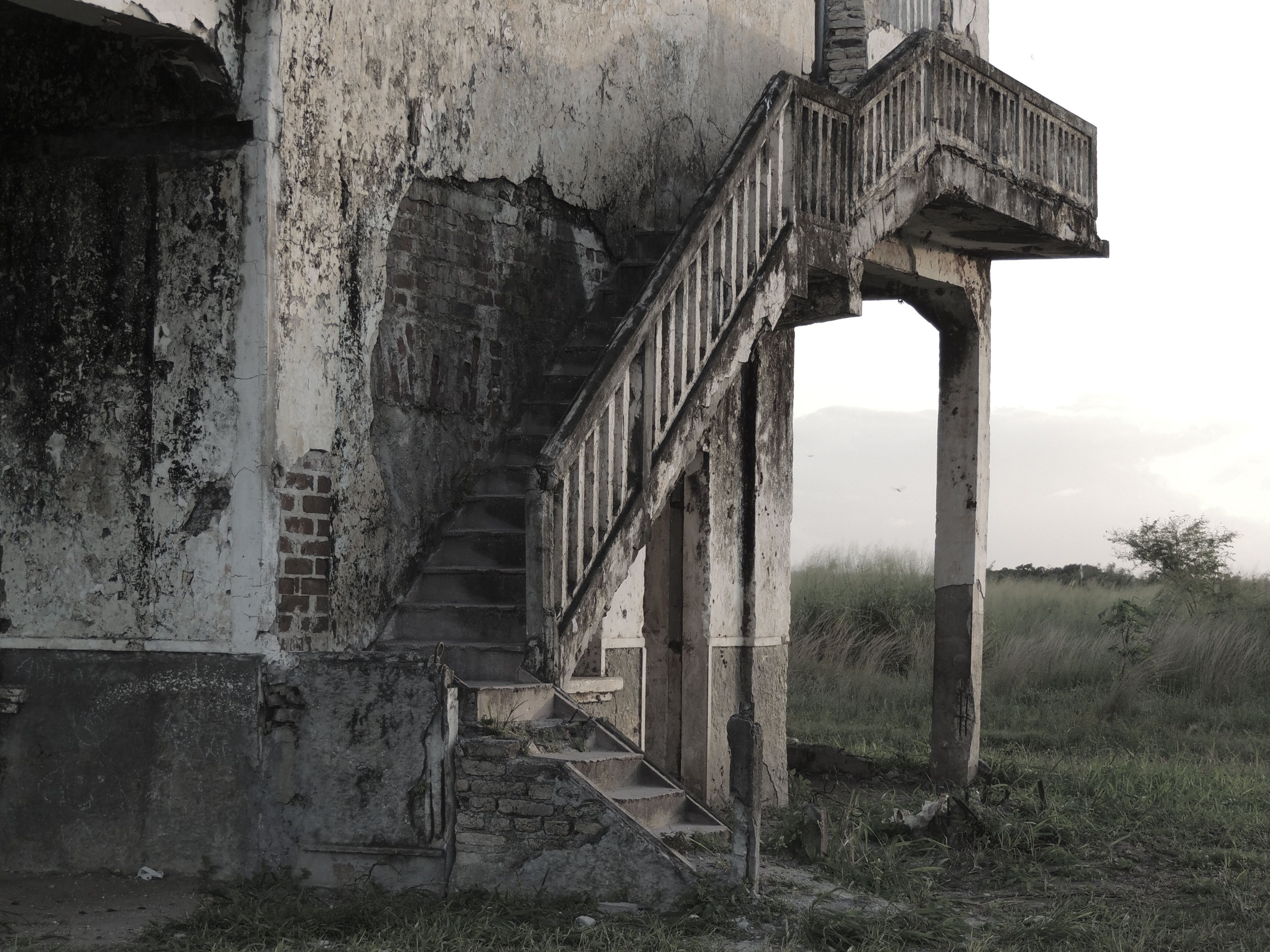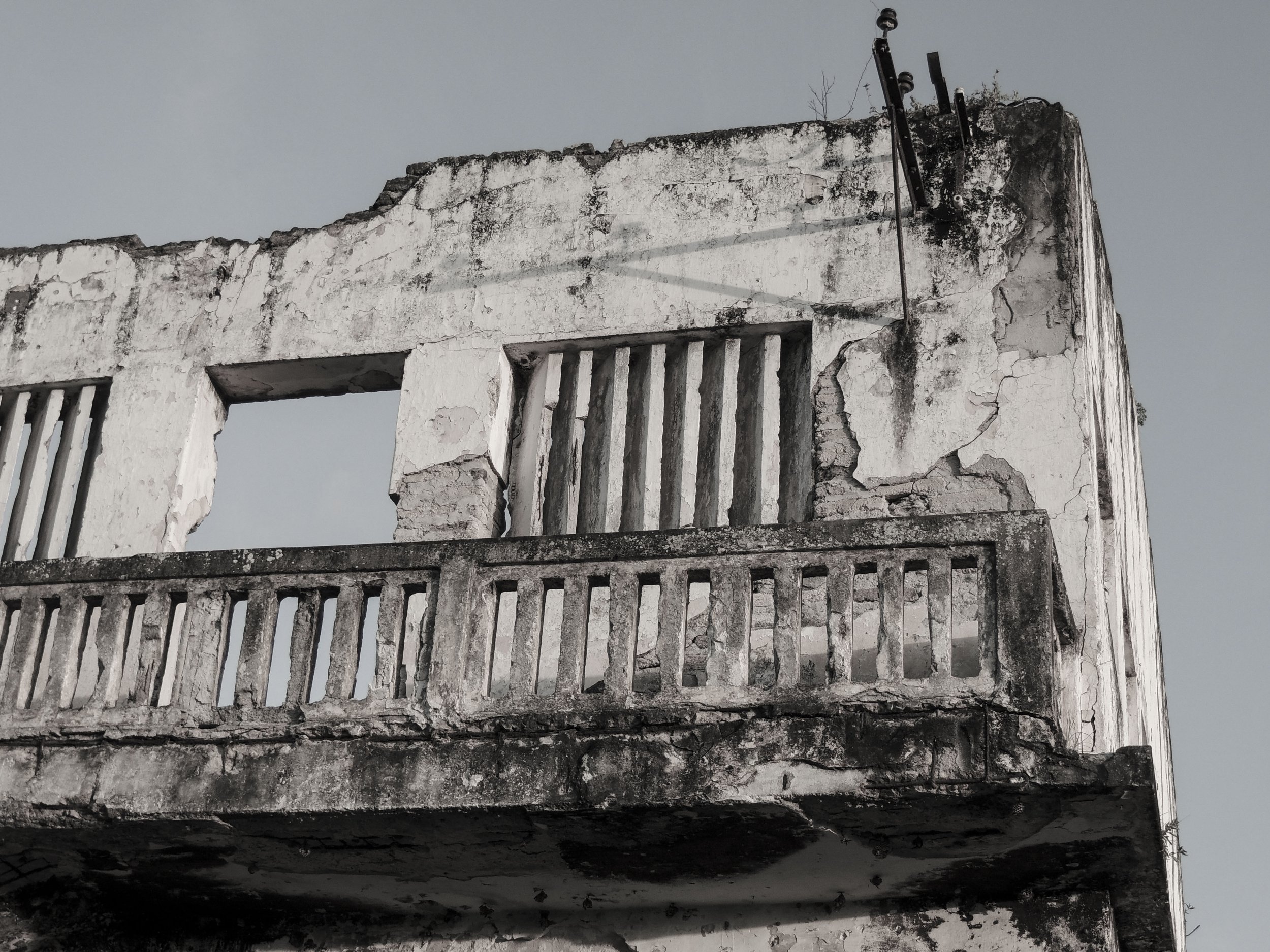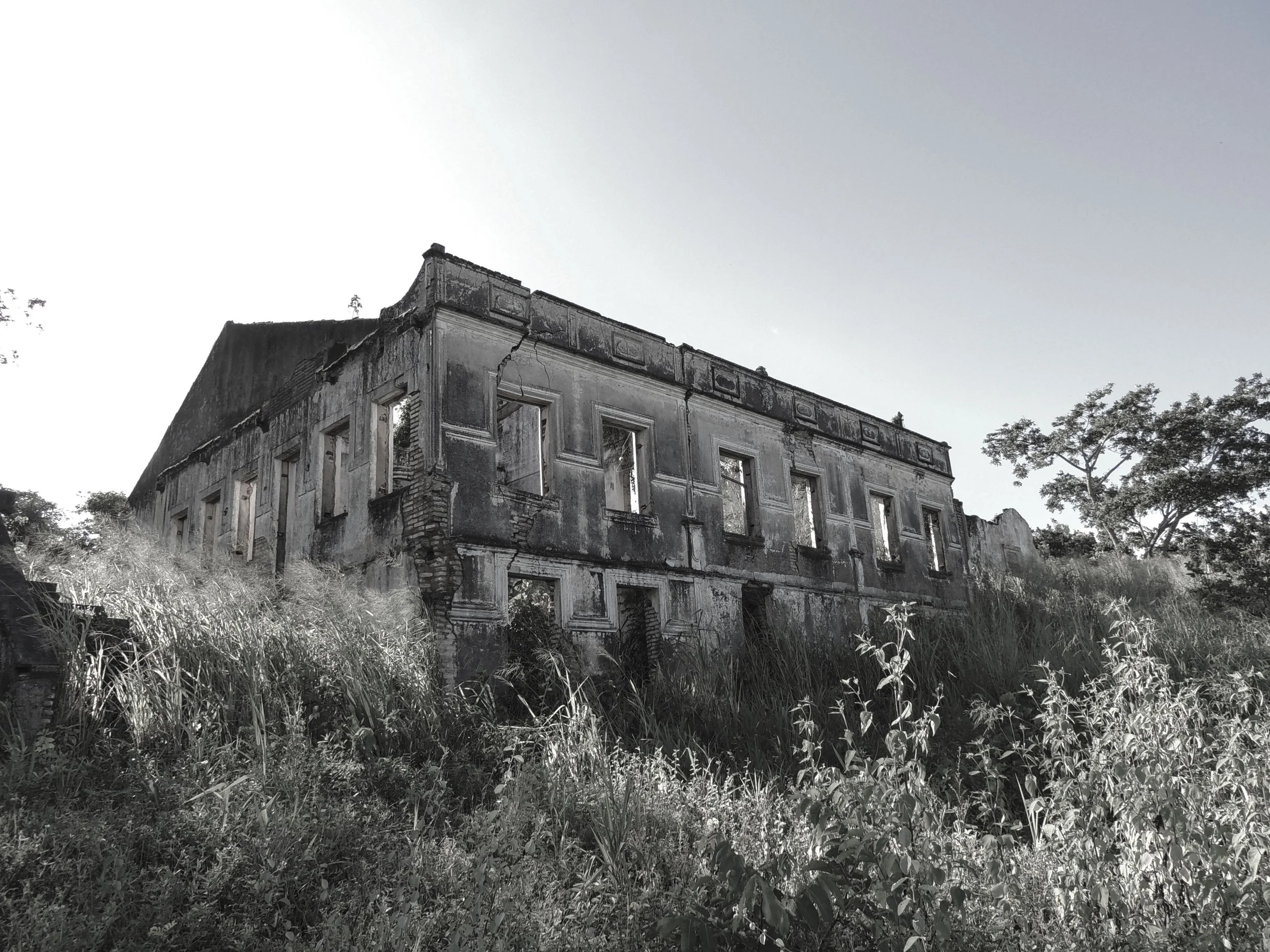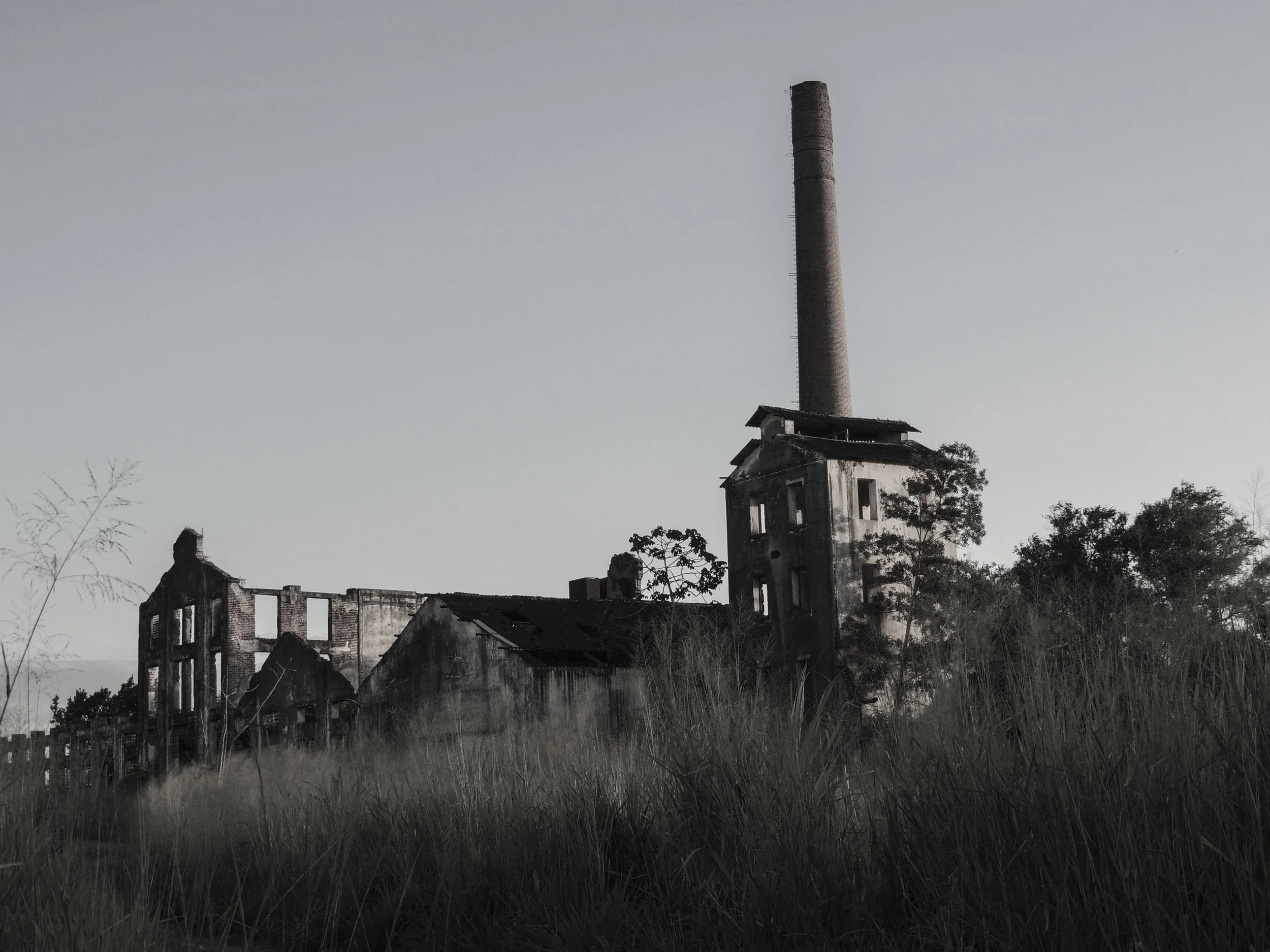









rotas esquecidas I, 2019
Photography. Mineral pigment on paper Fine Art Photo Rag Hahnemühle 308g, 100% matte cotton smooth. Dimensions variable.
The "Rotas Esquecidas I" image series began on an exploration trip to the interior of Rio Grande do Norte. Upon learning of an important set of abandoned mills in Ceará-Mirim, dating from the end of the 19th century to the beginning of the 20th century, I contacted a local company that offers tourist guides to visit the famous Rio Grande do Sul sugar cane route. Transformed into ruins by wind, time and neglect, these old sugar mills bear witness to the decadence and oblivion that Ceará-Mirim, at the time the main sugar production center in the region, suffered. A few traces of this history – a wall here or a tower there – compete on the horizon with coconut trees and bush, giving a faint glimpse of its past. The abandonment of many landmarks from Brazil's historical past has always intrigued me.In the case of Ceará-Mirim, I discovered that the city has no archive, museum or cultural centre to tell its story and regulate the relationship between memory and oblivion. A landscape that carries a heritage tinged with the hardships of slavery in colonial Brazil, could Ceará-Mirim's forgotten routes be the expression of a history of collapsed memory policies?A série de imagens "Rotas Esquecidas I" teve início em uma viagem de exploração ao interior do Rio Grande do Norte. Ao tomar conhecimento de um importante conjunto de engenhos abandonados em Ceará-Mirim, datados do final do século XIX e início do século XX, entrei em contato com uma empresa local que oferece guias turísticos para visitar a famosa rota da cana-de-açúcar do Rio Grande do Sul. Transformados em ruínas pelo vento, pelo tempo e pelo abandono, esses antigos engenhos de açúcar testemunham a decadência e o esquecimento que Ceará-Mirim, na época o principal centro de produção de açúcar da região, sofreu. Alguns poucos vestígios dessa história - um muro aqui ou uma torre ali - competem no horizonte com coqueiros e arbustos, dando um leve vislumbre de seu passado. O abandono de muitos marcos do passado histórico do Brasil sempre me intrigou. No caso de Ceará-Mirim, descobri que a cidade não mantém nenhum acervo — arquivo, museu ou casa de cultura — que conte sua história e regule a relação entre memória e esquecimento. Paisagem que carrega uma herança tingida das agruras da escravidão no Brasil colonial, seriam as rotas esquecidas de Ceará-Mirim a expressão de uma história de colapsos nas políticas da memória?"Rotas esquecidas I "系列图片开始于一次对北里奥格兰德州内陆地区的考察旅行。当我了解到塞阿拉-米林有一批重要的废弃榨糖厂,这些榨糖厂的历史可以追溯到 19 世纪末 20 世纪初时,我联系了当地一家提供导游服务的公司,让他们带我参观南里奥格兰德州著名的甘蔗之路。由于风吹日晒、年久失修,这些古老的糖厂变成了一片废墟,见证了塞阿拉-米林这个当时该地区主要的蔗糖生产中心所遭受的衰败和遗忘。历史的一些遗迹--这里的一堵墙或那里的一座塔--在地平线上与椰子树和灌木丛争奇斗艳,让人看到了它的过去。巴西历史上许多地标性建筑的废弃一直让我感到好奇。在塞阿拉-米林,我发现这个小镇没有任何收藏--档案馆、博物馆或文化中心--来讲述它的故事和调节记忆与遗忘之间的关系。塞阿拉-米林的地貌承载着巴西殖民时期奴隶制的艰辛,它被遗忘的路线会不会是记忆政策崩溃历史的体现?